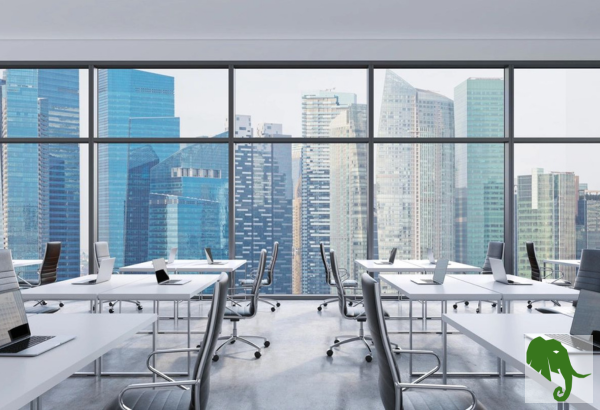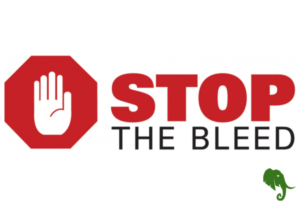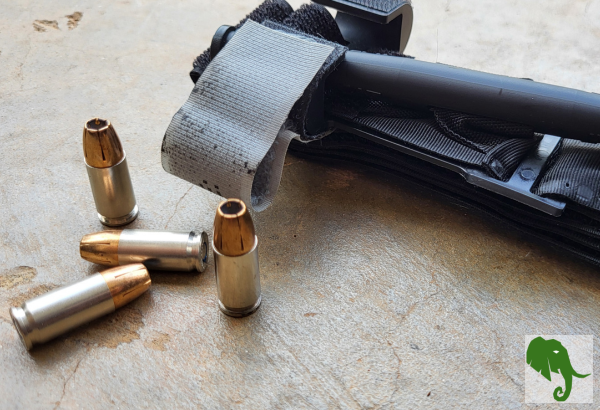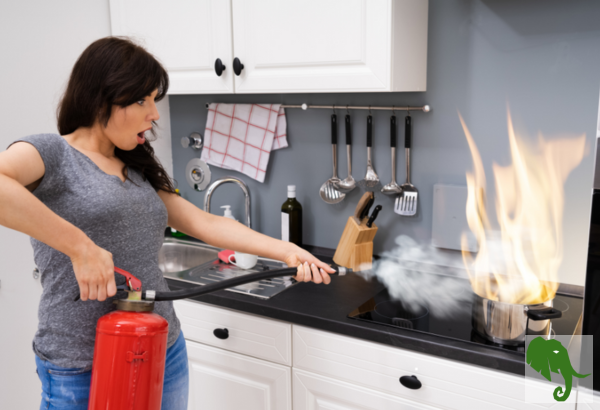
Ensuring safety in the workplace is not just the responsibility of management or safety officers; it is a collective responsibility that each employee should take seriously. Familiarizing yourself with emergency procedures, safety equipment, escape routes, and more is crucial for your personal safety and that of your co-workers. This article aims to provide comprehensive guidance on being prepared for various emergencies in your office environment and how you can be safer.
If you are wondering, safety when dealing with workplace hazards is beyond the scope of what we cover here.
Ensuring Security of Office Doors
Office areas are usually set back from a main entrance, with a secondary locked door system in place for added security between a lobby, for example, and the main office area. This is to create a buffer between visitors coming and going and the place where employees are. As an employee, it is our responsibility to ensure those secondary doors remain closed and locked.
Take an active role in preventing door tailgating. When you come in through an entrance where security measures have been employed to keep non-employees and guests from just walking in, like the lobby entrance, ensure that no one is behind you waiting for you to go through before they come in behind you. This is another area where we all have a responsibility to prioritize the safety of ourselves and our co-workers. Preventing door tailgaters is just one more way to play an active role. Yes, even our co-workers should be badging or scanning themselves in with few exceptions.
Secondary doors in office spaces should not have windows that allow visibility from the outside. Such windows can provide potential intruders with a view of the office layout and personnel, aiding in planning an attack. If windows are present, use one-way glass or frosting to obstruct the view from the outside while maintaining visibility from within. If clear windows are being used where you work, reach out to your Facilities team or HR and ask them to cover the windows for the safety of the employees.
And while on the subject of doors, remember to direct any unfamiliar individuals and even expected guests to the main lobby to properly check in if they have not yet. Do not be shy in asking them for their pass or credentials or simply if they have checked in. If unsure, you can always call your front desk or security team to confirm someone’s presence.
Knowing Your Exits and Alarm Systems
Familiarize yourself with the locations of all exits in your building and on your floor. This knowledge is critical in emergencies. Fire alarm pulls are usually located near exits to be easily accessible on your way out. Knowing these locations beforehand can save precious time during an actual emergency.
Every exit is required to have an exit sign above or near it. Most of the time they will be above an exit door. However, in some places you may see them along the floor. The idea being that if there were fire, you would be crawling on your hands and knees and with smoke, likely not able to see one above a door. Usually though, you will find them above the door.
Elevators are generally not an option during emergencies, so plan on using the stairs. When using the stairs, going down to get out, stay to the right or the outer edge to allow first responders to move faster on the left or inner rail. Make sure to know where the stairs lead and where you will exit the building before you need to know, as you will likely need to meet up with your group.
AEDs and First Aid Kits
You should know the location of Automated External Defibrillators (AEDs) and first aid kits in your office. If you do not know where they are, take the time to learn their locations. AED cabinets are often tied into the building’s alarm system, so do not tamper with them unless necessary.
Consider asking for additional supplies, such as tourniquets and sterile gauze rolls, to be added to your office’s first aid kit. Most standard first kits do not include items necessary to handle severe bleeding. Carrying your own trauma kit to work can provide additional peace of mind.
And it should go without saying, but consider getting some training. There are first aid and CPR courses out there as well as Stop the Bleed.
Fire Extinguishers and Fighting Fires
Knowing the location of fire extinguishers in your office is another good idea. Fire extinguishers are typically located at exit points and within your office suite, likely even your kitchens or breakrooms.
In the event of a fire, remember the acronym P.A.S.S. for using an extinguisher:
- Pull the pin: This frees the handles so you can squeeze them together.
- Aim the nozzle at the base of the fire, not the flames.
- Squeeze the handles together to release the extinguishing agent.
- Sweep the nozzle back and forth at the base of the fire.
Fires can double in size every 30 seconds to a minute. If a fire in your office is larger than an office paper waste basket or a beach ball, do not attempt to fight it. Evacuate immediately and call 911. Always ensure you have a clear exit path when attempting to use a fire extinguisher, and if you exhaust the extinguisher without putting out the fire, leave the area immediately. When trying to put one out, never put a fire between you and your way out. We will have more coming up on the use of fire extinguishers as well.
Situational Awareness
Yes, situational awareness has a place in the office just as it does anywhere else in public. Much like home though, it is easy to get relaxed while at work and let our guard down.
Pay attention to your surroundings. Stay alert, or at least work not to be oblivious.
You are at work regularly, so you have likely established a baseline of who is there and what ‘normal’ generally looks like. Look out then for the anomalies – people, behaviors, activities, or things that are out of the norm or seem out of place. Do not be shy in reporting anything to management and/or security that is out of place or is triggering something with your gut instinct.
Thinking Through Scenarios
Just as with your safety and that of your family’s in your personal life, thinking through scenarios is key and can really help you become better prepared in the workplace as well. It means you have some sort of plan. Thinking through scenarios is as easy as thinking about ‘what-ifs’ and ‘what-would-I-dos’ before something happens. Take into account where you might be, limitations there could be, would others be willing to help, what tools might you have available, are kids present, your response or actions you would take given a scenario, etc.
Those that take time to think through various scenarios or what-ifs in the workplace are ahead of the game compared to others who have not. Why? You will at least have some sort of idea of how you are going to respond, a game plan. You will not always get everything right; but you at least will be ahead of those that choose to do nothing.
Active Killer Response
You are likely more familiar with the term ‘active shooter.’ However, even at a larger scale, any tool can be used to harm or kill others, so I am using ‘active killer’ here to help remind us that it is not always about a gun. It more accurately reflects the situations and the human intent behind them.
Let me start by saying that we should not have to talk about such things; but unfortunately, it is the world we currently live in. The good news? In the overall scheme of things, and while the news outlets and agendas may have us convinced otherwise, these sorts of events really do not happen all that often. That does not mean though that we should ignore them or live with our head in the sand. They do happen; and they can and have happened in the workplace. We still need to pay attention to what is going on around us and those that we work with or that come into our place of business. And yes, of course, one is too many.
As previously mentioned, we need to stay alert or stay frosty, as they say in some circles. Think of your office or workplace as just another public space. Of course, maybe you are the type that is apathetic or rarely notices anything unusual or out of place. There again, if you are, you probably are not reading this post in the first place. But if you are somewhat interested in your safety, anytime you are away from home, then you need to have some modicum of situational awareness. And if you do spot something odd, report those people or things to management, security, or HR. Better safe than sorry.
The Federal Emergency Management Agency (FEMA) put together their Run, Hide, Fight action plan to deal with any sort of active shooter incident some time ago. Now it also covers even more than active shooters, i.e. vehicles, etc. And, if you did not know, knives can also do a tremendous amount of damage in a populated space. We will not do a deep dive on the specifics of the program itself here. You can learn more by going to: https://www.ready.gov/public-spaces. We will, however, cover a few key points to consider in an active killer event.
First, running and hiding may not always be options. Exits can be blocked, bad guys may be between you and escaping, other employees may be jamming up an exit, etc. There also may be nowhere good to hide where you are when an event occurs or if the bad element is looking in, under, and around everything for victims. What is your plan then?
Fighting becomes a very real option for you to act upon. Notice I did not say consider. If you can do it with a group of your co-workers, even better. Also think in terms of what you can use in your workplace as an improvised weapon for stabbing, cutting, throwing, distracting, or hitting. Nothing is off the table. The key is to get into the right mindset and commit. It could mean the difference between you going home or not. And I have to say it, as I know someone is thinking it, playing dead is a gamble at best. It has not worked in past events.
And finally, the goal when fighting is to take out the bad person, but at very least overwhelm or hopefully incapacitate them to where you can take control of any weapons they have and keep them under control until help arrives.
Of course, every situation is different and will require a different plan. There is no one size or response that fits all. It always depends. You will not know until you are in it, which hopefully none of us ever will be. This is again why thinking through different scenarios ahead of time is so important. Having any sort of plan before you need it is better than no plan. This is another instance where training could help you too.
We will be covering the topic of responding to active killers more in the future.
Training and Drills
Going through fire drills and knowing procedures for tornadoes is likely for your office or workplace. Take them seriously so in the event of an emergency, you at least know what to do and most importantly how to get out if it is safe to do so. Do not ignore them or opt not to participate. A fire marshal is likely going to come get you out anyway if you do not.
It is important to remember to stay calm and orderly during an evacuation, drill or not. Panic can lead to accidents and injuries, so maintaining a composed demeanor is crucial. Understanding the protocol for various emergencies, such as fires, tornadoes, and active shooter events, will help you react appropriately in any situation.
On Becoming a Floor Warden
Volunteering as a floor warden for your office space can provide you with valuable training on handling emergencies you could face while at work. Floor wardens receive specialized training and are responsible for guiding their colleagues during evacuations and other emergency situations. This role allows you to gain knowledge beyond what is typically provided to the general office population and positions you to help others in times of need. Be clear though. The training is not meant to be exhaustive; but you will know better where things are and the proper procedures for your workspace. It serves too as a way to put you in the mindset of thinking about safety perhaps more than you might have otherwise, and it allows you to meet other like-minded individuals.
The training is quick and easy and usually held once a year so you get a refresher and any updates. I highly recommend it.
Your Computer
Even if you are not in the corporate world, I bet there is a chance you work on some type of computer at some point in your day. Here are just a few basic reminders for these items in the office, as we all have a role in our office security measures and even our personal lives.
- You should be logging out anytime you leave your desk or station. It is not the first time you have had to log back in and it will not be the last. Do not make it any easier for nefarious individuals.
- Follow any standard operating procedures your IT or IT security teams may have insofar as securing your machines when you are away. This is usually specific to laptops, as you will want to lock them into their docking station or lock them up in your desk, especially when you go home for the day.
- If you do take your computer home with you, do not leave it out in plain sight in your vehicle. I know 2 or 3 stories, off the top of my head, of folks having their vehicles broken into because they left their work laptop right on the front seat.
Cybersecurity
And before we go, I would be remiss if I did not write a little on cybersecurity. I am not going to do a deep dive on this topic either. However, I am going to touch on a few items I think are worth a quick mention.
- Choose more difficult passwords. Do not use the same password for multiple access needs, i.e. email, an ecommerce shop, or a graphics application, for examples. Do not write them down and then leave them lying around in the office for the world to see either.
- Unsure of an email or text? Stop. Do not respond to it, click on any links, or open any attachments. Contact your IT security team and always follow your company’s standard operating procedures.
- If an application you are using does not have user management, do not share the same password to the same account with others. Talk to your manager or IT about upgrading to a version that supports user management or find an app that does.
Conclusion
Depending on our jobs or the careers we have chosen for ourselves, we sometimes spend the majority of our waking hours at work, in an office or in a workplace of some kind. And while we have co-workers we ‘know’ and maybe even consider some good acquaintances or even friends, we really never truly know everyone we work with, especially if there are clients or customers coming and going.
Taking proactive safety measures should be as much of a priority while we are at work as it is in any other part of our lives. By taking steps to familiarize yourself with emergency procedures, the location of fire extinguishers and first-aid kits, knowing evacuation routes, being safety/security-minded, and even having plans of your own, you not only help make things safer for yourself but contribute to an overall safer workplace environment.
Preparedness is key to effectively handling emergencies and minimizing their impact, even at work. Remember, it is your responsibility to be prepared ahead of time. Embrace this responsibility and encourage your colleagues to do the same in order to foster a culture of safety and readiness while at work.
Related Content

Overview Season 1: Episode 3 In this episode, we discuss the Stop the Bleed program with Gina Solomon, Trauma Program Manager at Gwinnett Medical Center in Lawrenceville,…

Top Takeaways from Multiple Active Shooter / Killer Training Events
To-date, I have had the opportunity to participate, as a volunteer, in 3 different active killer scenarios, an elementary school, a large shopping mall, and a major …

Proper Use of Fire Extinguishers
Have you ever experienced a grease fire while cooking, only to realize you weren’t prepared to put it out? Maybe you tried using water and …

Read other OwnGuard Solutions blog posts
Read our other posts centered around being safer and better prepared.

